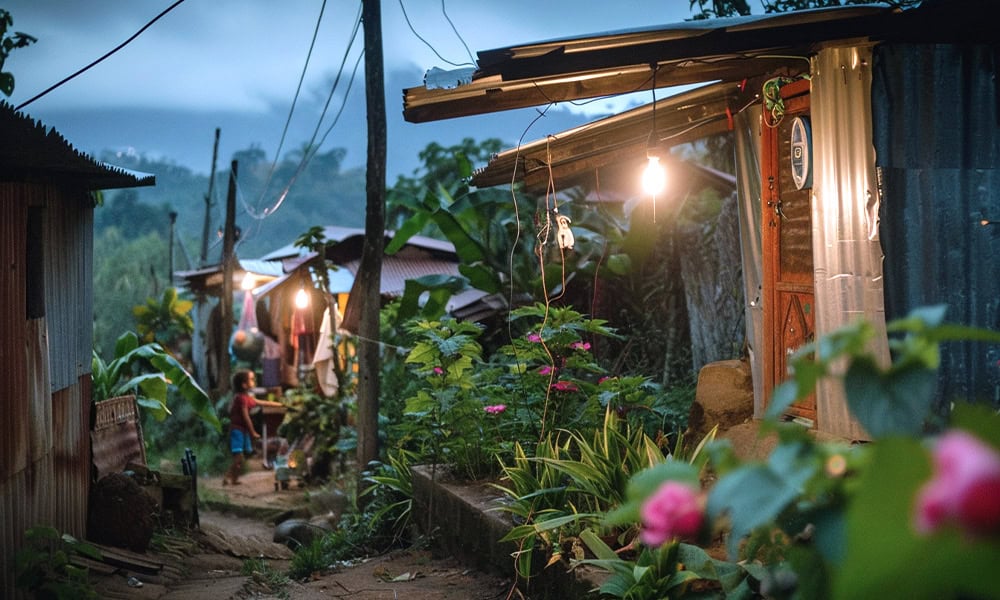As Costa Rica commemorates the 140th anniversary of its first public lighting, a poignant disparity persists. While in 2024, the country celebrates technological innovation and discussions about 5G technology are on the table, thousands of families across the nation still live without electricity, as highlighted by the Electricity Coverage Index 2019.
For over twenty years, the Costa Rican Institute of Electricity (ICE) has failed to design and implement a formal rural electrification program. The absence of electricity remains a harsh reality for thousands of Costa Rican families.
In Limón and Puntarenas, they face the greatest deficiencies in terms of electricity coverage, with 2,947 and 2,392 homes, respectively, lacking access to electricity. Among these, the cantons of Talamanca, Limón, and Golfito stand out as the most affected areas. For instance, in Talamanca, 4,400 households lack this basic service, while in Limón, 2,700 people are affected, and in Golfito, 2,142 are without electricity.
The situation varies in each canton and is deeply concerning. In Telire de Talamanca, nearly half of the houses lack electricity, with 988 cases. In Limón, Valle La Estrella has 87% coverage, leaving 584 homes without service. In Golfito, Pavón has the lowest coverage, with 254 homes lacking electricity.
Other regions of the country fare little better. In San José, the highest figures are recorded in Pérez Zeledón and Dota, with 586 and 332 people, on average, lacking electricity, respectively. In Alajuela, Upala (716) and San Carlos (390) stand out; in Cartago, Turrialba (1,109); in Heredia, Sarapiquí (764), while in Guanacaste, La Cruz (909) and Nicoya (424) also face this challenge.
Marco Acuña, ICE’s executive president, acknowledged ICE’s faults and emphasized the need to address these gaps.
“We’ve planned a rural electrification program with an investment of ₡23 billion to serve close to 3,000 families throughout the country,” he said.
This investment includes the construction of 402 kilometers of lines and the necessary infrastructure to guarantee the service. 43% of the funds will be allocated to projects in Puntarenas, benefiting 1,155 homes, followed by Limón and Cartago.
In 2023, ICE invested ₡300 million to extend the service to communities such as La Riviera de Coto, Rey Curré, and Isla Venado.
Guaranteeing a basic service such as electricity is the duty of a Costa Rican public institution. While it is important to develop technology and position the country at the forefront of new technologies, the state cannot continue to leave behind and abandon the people of rural areas.






